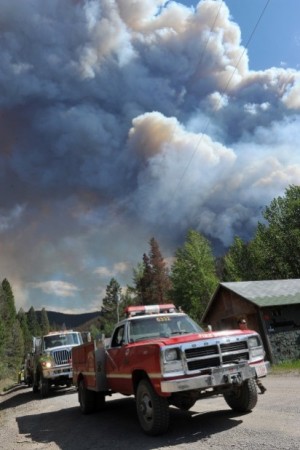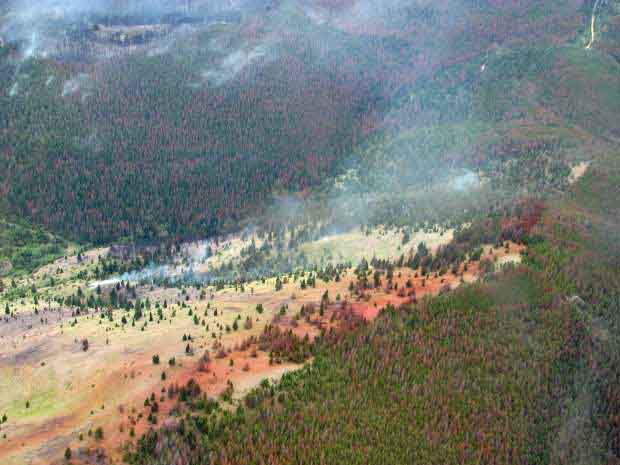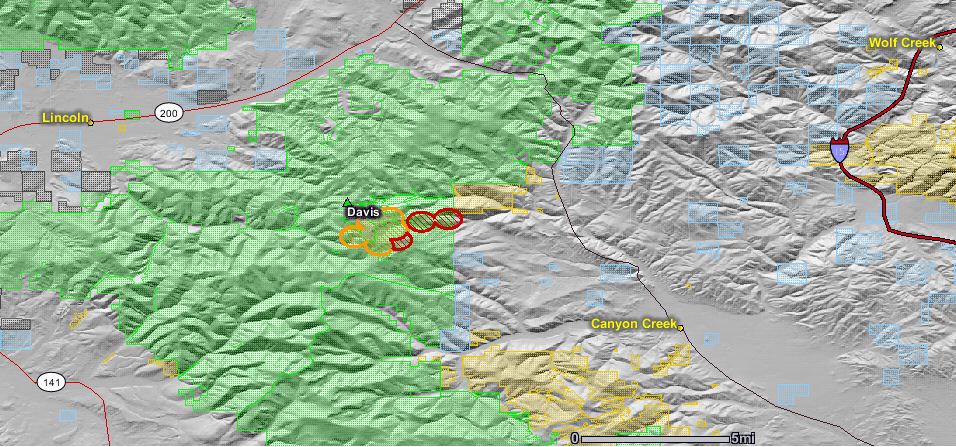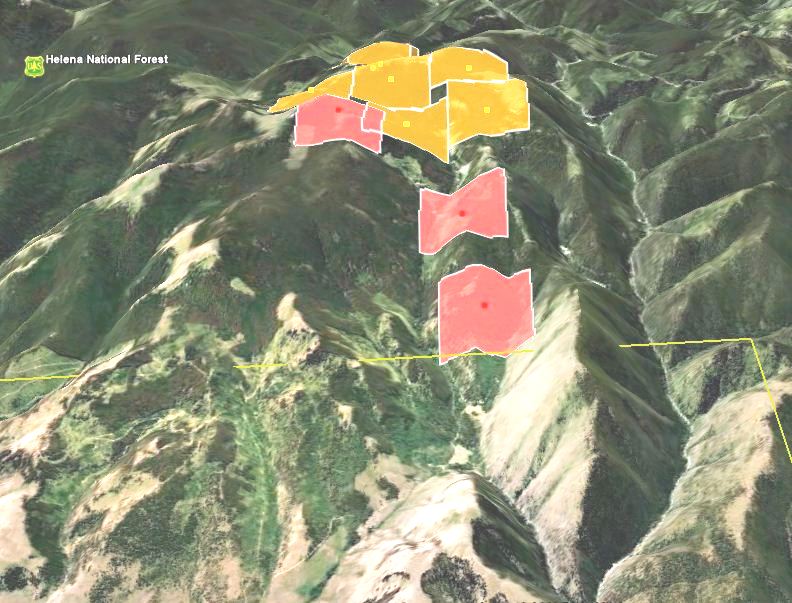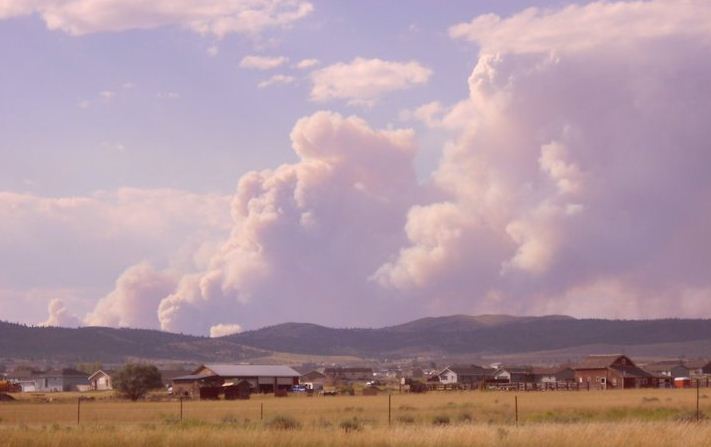Vote on the most significant wildland fire stories of 2010
As we documented earlier this month, the 2010 wildland fire season, when measured by the acres burned in the 49 states outside Alaska, was the slowest since 2004. But in spite of that, there has been significant news about wildland fire. In fact, we posted over 670 articles this year.
In 2009 we listed some of the top stories and invited you to vote on the ones that you considered to be the most significant.
Continuing that tradition, below we have listed the top stories of 2010. The line of duty fatalities are not listed unless there was an unusual spin-off story associated with the fatality. Below the list, there is a poll where YOU can let us know which stories you feel are the most significant of 2010.
Top wildfire stories of 2010
Jan. 8: The National Park Service released the report on the August, 2009 Big Meadow escaped prescribed fire in Yosemite National Park. The fire blackened 7,425 acres before being controlled by 1,300 firefighters at a cost over $15 million. It became the eighth largest fire in California in 2009.
Jan. 11: One of the five Type 1 Incident Management Teams in California was disbanded. Bill Molumby, who had been the team’s Incident Commander for several years, retired in November, 2009 and apparently they were not able to replace him.
Jan. 21: Federal wildland firefighter bill introduced in Congress. The “National Infrastructure Improvement and Cost Containment Act” would affect the pay, retirement age, and fireline liability of federal wildland firefighters.
Feb. 1: Fire contractor sentenced to 10 months in prison for forging wildfire training certificates and task books.
Apr. 23: NIOSH to study long-term health effects of working as structural firefighter, but not as a wildland firefighter. In a follow-up a few days later, Brian Sharkey of the USFS’ Missoula Technology and Development Center downplays lung cancer risks for firefighters. NWCG later responds to our article.
Apr. 30: The International Association of Fire Chiefs, an organization that concentrates on structural fire, received at least $13.2 million from the U.S. Forest Service and DHS-FEMA over a seven-year period, reportedly for wildfire-related purposes. The IAFC became furious at Wildfire Today for exposing the information.
Jul. 5: Montana Congressman Denny Rehberg, one of the wealthiest members of Congress, sues the Billings Fire Department over the loss of “trees and ground cover” on his property during an 1,100-acre fire in 2008.
Aug. 2: Hundreds of wildfires in Russia claimed more than 50 lives, left more than 3,500 people homeless, and caused massive air quality issues in Moscow and other areas.
Aug. 2: A BAe-146 jet airliner was converted to an air tanker and was tested in Missoula. The Interagency Air Tanker Board failed to certify it due to inadequate ground coverage of retardant.
Aug. 24: The 100th anniversary of the fires of 1910 and Ranger Pulaski’s incident are commemorated at several events in Washington, Idaho, and Montana.
Aug. 26: In spite of weather forecasts that would have alarmed most fire managers, the Helena National Forest in Montana ignited the Davis prescribed fire during a near record heat wave. The fire escaped and burned 2,800 acres. The report was released in November. The Forest Supervisor said the report did not point out “something clearly that we did wrong, done incorrectly or that we’re going to make big changes on”.
Sep. 6: The Fourmile Canyon fire burned 6,200 acres and 169 homes a few miles west of Boulder, Colorado. The fire was devastating to local fire districts within the burned perimeter in several ways, including the facts that a firefighter’s burn pile escaped and started the fire, the homes of 12 firefighters burned, and one fire station and an engine inside it burned.
Sep. 21: The Commander of the Utah Army National Guard assumed responsibility and apologized for the Machine Gun fire that burned 4,346 acres and three homes near Herriman, Utah. The fire started during target practice with a machine gun at a National Guard base.
Sep. 24: The Australian state of Victoria tested the U.S.-built DC-10 very large air tanker and concluded that it did not perform adequately and would not be suitable for use in their wildland-urban interface areas.
Oct. 13: The US Forest Service’s response to the 2009 Station fire is criticized, and Congress holds hearing in Pasadena, CA about the management of the fire, which burned 160,000 acres near Los Angeles.
Oct. 26: “Dirty Jobs” TV show features prescribed burning in a Florida wildlife refuge. Video footage captures some activities that are criticized by some viewers.
Dec. 2: A fire in Israel kills 43 prison guards and firefighters. Air tankers from the United States respond.
Dec. 7: NTSB holds a meeting about the helicopter crash on the Iron Complex fire in northern California in which nine firefighters and crew members died. Much of the blame was attributed to falsified helicopter performance documents supplied by Carson Helicopters when they applied for a contract with the U.S. Forest Service. Carson and the surviving co-pilot dispute that conclusion.
===================
Honorable mention stories (not exactly top stories, but interesting; they are not part of the poll).
Feb. 24: Wood piles were burned on frozen Lake Pactola in South Dakota.
Mar. 29: Washington D.C. Metro train drives through wildfire, and stops in the middle of it. And on July 25 we posted a very impressive video that was shot from a Greyhound bus that drove past a large bushfire during the night in Queensland, Australia.
May 11: NWCG outlaws the use of some terms, including “appropriate management response” and “wildland fire use”.
Jun. 20: It was not a wildland fire, but every firefighter can relate to some of the problems encountered when a kinked fire hose and improper procedures delayed the rescue of IndyCar driver Simona de Silvestro from her burning race car which crashed at Texas Motor Speedway.
====================
POLL
Feel free to leave a comment (or “response”) explaining your choices, or to discuss other news items that did not make the list.

